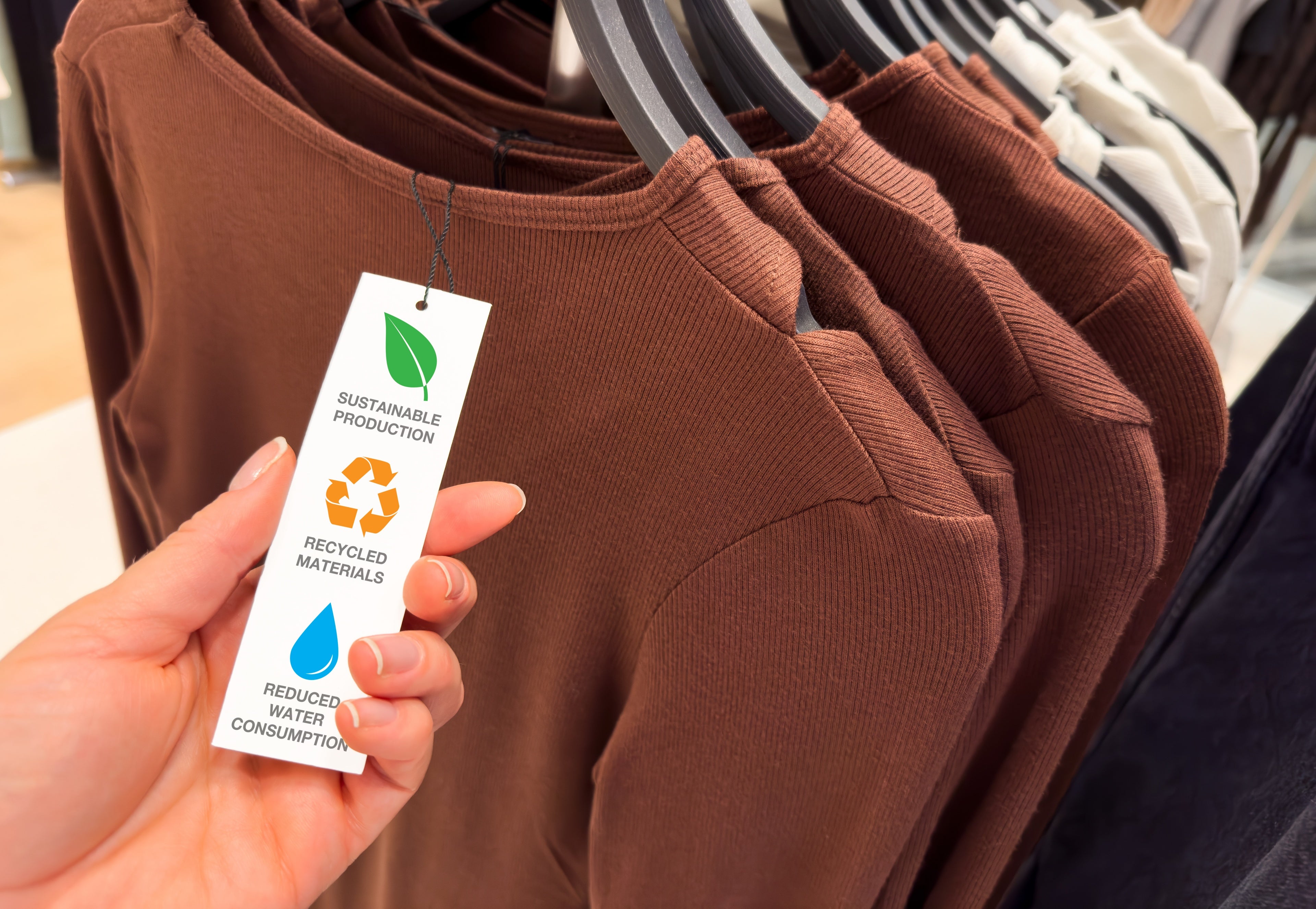Cape Town Sustainable Fashion: Moral Clothes for a Much Better Planet
Cape Town Sustainable Fashion: Moral Clothes for a Much Better Planet
Blog Article
Remain Ahead of the Curve by Exploring Ingenious Fashion Trends
In an industry as vibrant as style, remaining ahead entails even more than just complying with present fads-- it demands an expedition of advancement. The merging of technology and fashion heralds a brand-new period of consumer involvement.

Embracing Smart Textiles
Recently, the garment industry has seen a transformative shift with the assimilation of wise textiles, a cutting-edge advancement that blends modern technology with material. This advancement represents not just a combination of aesthetics and performance yet additionally a significant leap towards sustainability and customization in fashion. Smart fabrics, additionally called e-textiles, embed innovative electronic devices such as sensing units and conductive threads within the fabric, allowing garments to connect with the user or the atmosphere.
These textiles are developed to keep an eye on physiological criteria, such as heart rate or body temperature level, providing real-time health and wellness analytics. Beyond health and wellness applications, clever fabrics are likewise being used for adaptive clothing, which can change color or pattern in response to environmental stimuli, thus offering a vibrant style experience.
Moreover, the advancement of energy-harvesting textiles that produce power from motion or sunlight is paving the way for self-dependent wearable innovation. This development is appealing to eco aware customers and designers aiming to lower the eco-friendly impact of fashion. As study and advancement in this area advance, clever fabrics are expected to end up being progressively common, reshaping the landscape of modern fashion with their multifunctional abilities.
The Surge of 3D Printing
Reinventing the production landscape, 3D printing has actually become a game-changer in the apparel industry. This cutting-edge innovation has actually allowed designers to press the borders of creativity, producing complex and tailored garments that were formerly unimaginable. By leveraging digital design and additive production, 3D printing facilitates the development of complicated geometries and patterns, enabling developers to experiment with brand-new textures and structures.
A significant benefit of 3D printing in fashion is its capability to create on-demand, reducing waste and decreasing inventory demands. This efficiency not only maximizes production processes however additionally permits fast prototyping, enabling developers to bring their visions to life in a much shorter timeframe. Furthermore, 3D printing sustains customization to a level unequaled by conventional methods, providing individualized fits and special designs tailored to specific customer preferences.
The rise of 3D printing has also equalized style, making it accessible to emerging designers who can now make top notch pieces without significant economic investment in traditional production facilities. As modern technology remains to advance, the apparel industry is poised to harness the full capacity of 3D printing, discovering brand-new products and methods that will definitely redefine exactly how style is conceived and produced.
Sustainable Fashion Advancements
As the fashion market faces journalism requirement for environmental responsibility, sustainable fashion technologies have actually arised at the leading edge of transformative change. The expanding recognition of ecological impact has fueled a change in the direction of more eco-conscious practices and products. Brand names and developers are now focusing on sustainability, incorporating approaches that minimize waste and lower carbon footprints.
One considerable advancement is the rise of round Continue style, which stresses recycling and upcycling to prolong the lifecycle of garments. This approach not only decreases waste however also urges customers to embrace a more conscious strategy to apparel consumption. Furthermore, making use of sustainable products, such as natural cotton, hemp, and recycled polyester, has gotten grip. These products require much less water and power during manufacturing, substantially minimizing ecological impact.
One more innovation depends on the adoption of cutting-edge dyeing methods that utilize natural dyes or waterless procedures, consequently minimizing the substantial quantities of water and chemicals traditionally utilized in fabric dyeing. Moreover, innovations in biotechnology have resulted in the production of lab-grown natural leather and materials, using eco pleasant and cruelty-free options to conventional products. Via these pioneering initiatives, the garment industry is making meaningful strides towards a more lasting future.

Tech-Integrated Garments
Tech-integrated apparel represents a revolutionary fusion of style and technology, improving just how people connect with their clothes. This cutting-edge domain name is noted by the addition of wise textiles and ingrained electronic elements, improving both performance and visual allure. From physical fitness trackers installed in sportswear to warmed jackets managed by means of smart device applications, tech-integrated garments provides customers unprecedented ease and flexibility.
Introducing brands are driving this pattern, concentrating on creating garments that reply to environmental stimuli or customer commands. For example, some garments can change shade or pattern in reaction to temperature level shifts, while others include biometric sensing units to keep track of health and wellness metrics like heart rate or stress levels. The seamless assimilation of modern technology into textiles additionally includes environmental sustainability, with efforts to create self-cleaning materials or garments that readjust to climate condition, thus decreasing the need for several layers.
Additionally, the introduction of wearable technology is not simply restricted to clothes however includes accessories like watches and glasses, additional expanding the discover this range of tech-integrated style. As the sector proceeds to innovate, the potential for modification and personalization in garments expands, supplying consumers one-of-a-kind, tech-enhanced fashion experiences that deal with their private demands and preferences.
Future of Virtual Fashion
In recent years, the future of virtual fashion has emerged as a transformative pressure within the industry, leveraging developments in electronic innovation to redefine just how style is created, experienced, and eaten. By incorporating augmented truth (AR), online reality (VIRTUAL click for info REALITY), and 3D design devices, designers can currently craft interactive and immersive experiences that transcend conventional style limits. Digital style enables the development of garments that exist entirely in electronic atmospheres, using endless possibilities for innovation without the restrictions of physical manufacturing.
This electronic change not just offers opportunities for imaginative expression but also addresses sustainability problems integral in standard fashion practices. Cape Town Sustainable Fashion. By getting rid of the demand for physical sources, digital fashion lowers waste and lessens carbon footprints. In addition, the rise of virtual style lines up with the raising customer need for unique and personalized experiences, as virtual garments can be tailored and tailored to individual preferences with convenience

Conclusion
The style sector's future lies in the combination of sustainable methods and ingenious innovations. Online fashion is positioned to redefine customer interactions.
In current years, the style industry has observed a transformative shift with the combination of clever fabrics, an innovative development that blends modern technology with textile.As the style industry grapples with the pushing demand for ecological responsibility, lasting style technologies have arised at the leading edge of transformative adjustment.In current years, the future of online fashion has arised as a transformative force within the market, leveraging developments in electronic technology to redefine how style is produced, experienced, and taken in. The surge of digital style aligns with the enhancing customer need for special and customized experiences, as online garments can be tailored and tailored to individual choices with convenience.
The style sector's future lies in the assimilation of ingenious innovations and lasting methods.
Report this page